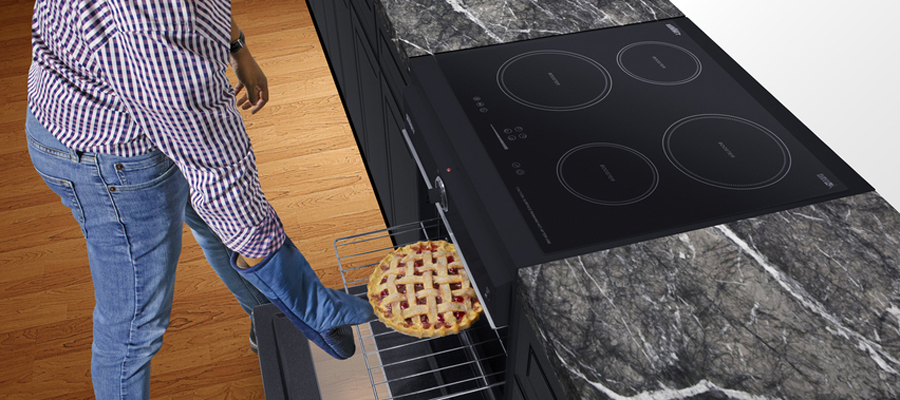While many cooking trends come and go, we think it’s safe to say that electric cooking is here to stay. More importantly, induction cooking is proving to be much more than a buzzworthy fad. Forbes reported that in 2023, induction cooking appliances accounted for 18 percent of all cooking sales across the United States.
What Is Induction Cooking?
Conventional cooking, whether gas or electric, requires an element to create heat, then transfer it to your pot or pan through a stovetop surface. In induction cooking, your pot or pan IS the heating element. When the cooktop is turned on, a copper coil underneath the surface uses electromagnets to generate an alternating electric field.
7 Fun Facts About Induction Cooking
For all those interested in making the switch from gas cooking to induction, we’ve found 7 interesting facts you should know before making the decision:
1 - First Introduced in 1933
Despite how new and high-tech it might seem, induction cooking technology is by no means a new concept. Surprisingly, it was first introduced at the World's Fair in Chicago in 1933, and following this, General Motors (GM) held numerous induction cooker demonstrations in North America during the 1950s.
2 - Cooks Faster Than Traditional Cooking
With induction cooking, there's no need to wait for a pot to boil. A study by REVIEWED showed that, on average, induction cooktops brought a pint of water to a boil in 70 seconds. Compare this number to the data they received when testing gas and radiant cooktops, which REVIEWED said boiled water in 124 and 130 seconds, respectively.
3 - Is Safer Than Gas Cooking
Safety should always be at the top of people's minds when dealing with anything cooking-related, which might explain why more people choose induction cooktops and ranges. Unlike gas, induction cooking is flameless and has no open flame. More importantly, the magnetic energy does not produce any heat until it comes into contact with magnetic material: your cooking vessel. With no heat unless there’s a magnetized pan on the burner, your children and pets can’t accidentally activate the stovetop, drastically reducing any chances of accidents.

4 - Heats the Pan Not the Food
The heating element in induction cooking is the cookware. When the cooktop is turned on, a copper coil underneath the surface uses electromagnets to generate an alternating electric field. The energy then induces currents inside your pot to vibrate causing friction. This friction creates heat in the pot (not on the cooktop's surface), with more than 85 percent of the energy directly heating the contents.
5 - Works With Most Cookware
Induction cooktops use magnetic energy, meaning the pots and pans used must be made from magnetic material. Thankfully, you won't have to rush out and replace everything you own. You can simply test what you have: To determine if your current cookware is compatible, simply place a magnet on the bottom of the pan. If the magnet sticks, you have induction-friendly cookware.
6 - Is Easy to Clean
Induction cooking heat is primarily confined to the heated cookware, keeping the rest of the cooktop's surface cooler to touch for a safer experience and less chance of collecting baked-on stains. This makes induction cooktops much easier to clean than their gas counterparts. The glass surfaces featured on our Safety First series are a snap to clean because dirt, dust, and food have nowhere to hide. A gentle wipe with a damp cloth removes most spills, grime, and dirt.
7 - Is Greener Than Gas Cooking
Experts all agree that gas stoves emit toxic air pollutants such as nitrogen dioxide and methane leaks, which could threaten the environment and your health.
"Switching from gas stoves to a more efficient electrical appliance is good for indoor air quality. It's also good for climate change, and some newer technologies are even better for cooking," Jon Levy, from the Department of Environmental Health at Boston University, said when speaking with USA Today.
Summit’s Induction Appliance Solutions
Safer cooking, faster heating, easier cleanup, and energy savings are standard with Summit's complete induction cooktops.
In addition to our induction cooktops series, we offer a line of induction ranges made in the USA . These innovative units come in black, stainless steel, and white finishes with a 24" footprint.

